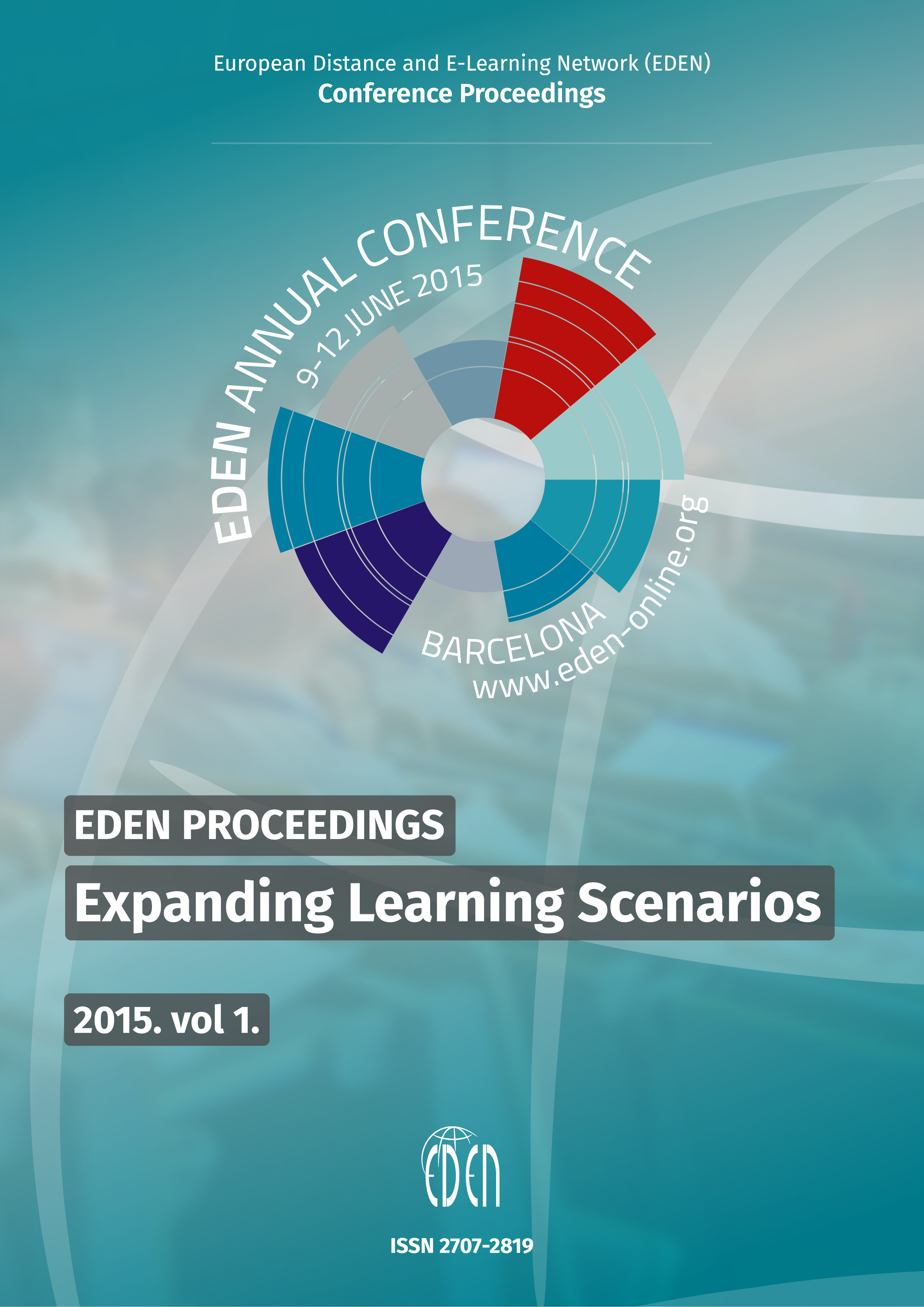Lecture vs Webinar: Engagement and Distraction in Distance Learning Adult Teachers
Lecture vs Webinar: Engagement and Distraction in Distance Learning Adult Teachers
Author(s): Maria Elisabetta Cigognini, Isabella Paoletti, Riccardo Fattorini, Maurizio BoscarolSubject(s): Social Sciences, Education, Higher Education
Published by: European Distance and E-Learning Network
Keywords: Adult Learning, Blended Learning; Distance and e-learning methodology; Distraction; Multitasking; Volition; Learner needs and motivations; Lifelong learning; MOOCs; Training of teachers
Summary/Abstract: The landscape of learning is currently witnessing convergent streamlines of change. Among potential recipients of education interventions an increasing request towards high quality education can be perceived. Simultaneously, the community of educators/instructors is striving towards increasing the offer, making it more democratically available and improving the service. The movement for openness of learning content and courseware is pushing a paradigm change and a need for new approaches in using ICT for smart environment. There are numerous fields of study which can profitably be utilized in planning distance learning (Oblinger, 2013; Salmon, 2014) or blended courses (see for instance Ligorio et al., 2006; Merrill, 2002). Further to such studies a new thread of investigations recently emerged regarding quality and efficiency of MOOCs (Downes, 2013; Morrison, 2013; Read & Rodrigo, 2014; Oblinger, 2013). In fact MOOCs, which were born with a promise of democratization and of improvement of teaching quality, provide us with information on huge numbers of subjects and on courses repeated several times, thus granting strong external validity to the performed studies (Kim et al., 2014). Moreover, the line of research dealing with study motivation is also reviving, in considering motivation and volition in distance learners and also in exploring causes and consequences of nowadays study environments, in which students make use, with multiple goals, of their own electronic device (BYOD – Bring Your Own Device) (Rosen et al., 2013; Park et al., 2013).
Journal: European Distance and E-Learning Network (EDEN) Conference Proceedings
- Issue Year: 2015
- Issue No: 1
- Page Range: 521-530
- Page Count: 10
- Language: English

